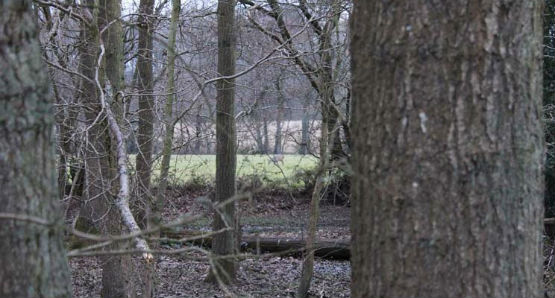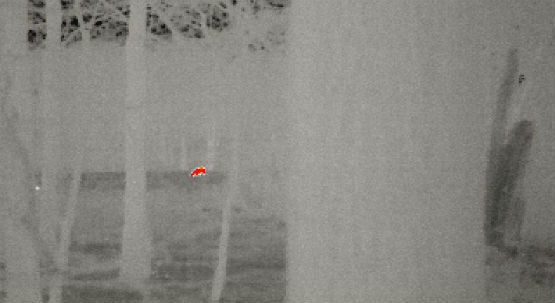Infrared thermal imaging specialist Jack Wallis offers some advice on thermal imaging camera’s and what to look for when considering a purchase.

Long strictly the preserve of military circles, infrared thermal imaging cameras are now in use across a wide array of different fields, including deer management.
From Maritime Security to Law Enforcement, the power to clearly see an individual regardless of weather conditions is a huge advantage to many. However, infrared cameras have more recently been used to great effect in an entirely new area, that of Wildlife Management.
But how can infrared thermal imaging possibly help with Wildlife Management? To answer this question we must first delve into how infrared cameras work. For despite their popularity being at an all-time high, they still remain a mystery to many.
The very simplest explanation is that infrared cameras allow the user to ‘see heat’. Or, more specifically, they greatly expand the visible spectrum (parts of which the eye usually cannot see) and enable an individual to view the infrared radiation (heat) that is given off from the world around us. An infrared camera forms a picture based on these different temperature ranges, of which objects emitting great heat are the most noticeable.

(Above: the FLIR Scout II 640 Hunter)
For example, whilst a tree or building appears cool when viewed through an infrared camera, a person, animal or vehicle, on the other hand, are instantly distinguishable. This of course is because of the elevated levels of heat that these objects emit.
For deer stalkers, gamekeepers and anyone with a keen interest in Wildlife Management, an infrared camera will allow them to scan their surroundings more effectively than ever before. By using a vision based on heat, no matter the time of day or visibility, the user will be able to quickly and easily find their target. This may prove particularly useful for locating deer on those cold and grey winter days when they are seemingly able to blend into the background, or for attempting to locate a wounded animal that has left a blood trail. Following the blood’s heat signature with an infrared camera will ensure that the animal may be dispatched quickly and humanely, crucial to maintaining ‘Best Practice Guidelines’. The potential uses are numerous, and infrared thermal imaging cameras truly have the potential to revolutionise the way wildlife enthusiasts operate in the great outdoors.
Advancements in the field of infrared thermal imaging cameras mean that they are no longer the bulky and extremely expensive devices of old. Improved manufacturing processes promise that most infrared cameras made by companies such as FLIR, Guide IR and Pulsar, to name but a few, are not only small (being able to easily fit in a jacket pocket), but have also become much more affordable to the general public.
What to look for in a Thermal Imager


(Above: The same image of a Roe Deer as seen by the naked eye and infrared camera)
When looking at purchasing a thermal imager there are a few essential factors that need to be taken into consideration to ensure you get a product which is best suited to your needs. We will now look at the key features that make up a thermal imaging device.
Sensor resolution:
Of all the requirements sensor resolution is the most important factor to consider and when comparing products you should prioritise finding the highest resolution you can for your budget. Higher resolution imaging provides more accurate viewing and has a finer and sharper detail when used. Because of this it is one feature to not compromise on. Most specification sheets will state the detection (you can detect ‘something’ is present), recognition (you can recognise it is human) and identification (you can identify it is a man/woman, model of car etc.) ranges of a man sized target with an emphasis on the detection range.
Range of detection:
The range of detection and consequently the recognition and identification ranges vary from model to model and therefore when deciding which unit is best it is essential you determine exactly what you will be using it for to ensure it is able to perform under the required conditions. Range of detection is determined by a combination of optical magnification and sensor resolution.
Frame rate:
As known as frames per second (FPS) or frame frequency, the frame rate determines the rate at which the imaging device produces consecutive images and therefore the refresh rate and smoothness of the moving image you can see. Most models specification will display the rate in Hz ranging from 9 to 50, a higher frame rate means a smoother image when panning or tracking a moving target. To help get an idea of what to compare this to a standard TV broadcast rate is 25Hz.
I hope that this brief article has given you an insight into thermal imaging cameras. If you’d like to learn more then visit the 'Infrared Camera Warehouse: http://infraredcamerawarehouse.co.uk/
Alternatively to read more about the use of thermal imaging camera’s in deer management then follow this link to an article written by Matthew Rogers in 2013: flir-scout-ps-thermal-imaging-camera-review



















